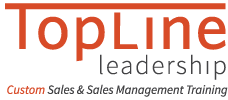Last night I was watching a baseball game between the San Francisco Giants and the Milwaukee Brewers. It was a hard-fought game, with the Giants prevailing in the 14th inning. After the game the Giants coach was asked what he said to his erratic pitcher during a visit to the pitcher’s mound at a critical point in the game. “I just told him to slow it down. Stop being in such a hurry to make your pitch.” To improve the quality of your sales pitch, you need to slow down, too.
Today’s customers are fast-paced, busy, armed and sometimes overwhelmed with the most updated information on goods and services. Surveys show 50-70% of the buying process is completed before the salesperson even enters the picture. If everyone is moving so fast why would I suggest that you slow down your sales process?
1. You’ll learn more about the customer’s needs.
The single biggest mistake salespeople make today — the mistake that causes more lost sales and lower win rates than anything else — occurs when salespeople pitch their solution too fast. They talk too soon about what their service or product has to offer. And by “too soon,” I mean in the first conversation with a prospect. At that point in the process, it’s rare that a customer will fully understand their needs, so how can the salesperson? When you offer your solutions too soon, you don’t know if the capabilities you’re offering truly match the customer’s needs (and neither does the customer).
Just because the customer is moving fast, that doesn’t mean that you should too. If you slow down—take the time to understand the customer’s needs—you’ll gain invaluable knowledge about how your solution resonates with the customer’s business goals. You’ll be able to link your differentiators to specific needs, which will give your solution more credibility. If you can’t make these linkages, you won’t have a compelling answer to the question, “Why should I buy from you?”
2. You’ll improve the customer’s buying process.
Even if the customer thinks they’re nearing the end of their decision process at the point when you enter the picture, that doesn’t mean they’re doing a good job of buying. You know this is true! How many times have you seen something that a prospect overlooked or didn’t give enough priority to?
Many sales organizations tell me the biggest sales challenge that they face is the customer who decides to do nothing. Sometimes the customer who thinks they’re nearing the end of their buying process might actually need to be backed up to reexamine an earlier stage in their buying process. Slow things down, seek to understand what factors they’ve considered and what they may have overlooked, so you can help improve the way they are making their decision. Ask questions such as, “Why did you even start looking at this issue in the first place? What problems were you dealing with that you are trying to solve?” If you think they are overlooking something important, mention it to them: “Other customers have told us that this particular problem also creates issues with XYZ. Have you experienced the same thing?” You will be adding much more value to the sales conversation if you help customers determine where they are in their buying process.
3. You’ll create more urgency to buy.
What I also mean by “slowing down” is to get the customer talking to you about what they’re looking for (and not looking for) and why. You want to determine what they think they need, and help them uncover new needs and priorities—and, equally important, explore the impact and ripple effects of their problems. Early in the sales process, that means getting them to talk about their problems, needs, and opportunities. Ask them about the history of the problem, what they’ve tried in the past, and get them to broaden their horizons: “How does that impact ____?” “Why do you think ____ is happening?”
Your job as a sales consultant is to explore other needs and identify secondary problems which your solution can possibly solve. When customers realize that the impact of the problem (or the size of the opportunity) is much bigger than they initially realized, they’ll put a higher value on your solution—and feel much more urgency to take action sooner rather than later.
4. You’ll improve your ability to shape the right solution for each customer.
When you know more about the customer’s history and problems, you’ll be in a better position to architect a solution that will more perfectly fit their needs. This is true whether you’re the first salesperson through the door or if they’ve done their own research (or perhaps already looked at your competitors’ solutions).
5. You’ll improve customer satisfaction.
On their own, customers will often set unrealistic expectations about what your solution will do for them (you know this is true, too!). That sets them up to be disappointed in the outcome no matter how well your solution performs.
That’s why another aspect of slowing down is helping the customer define realistic expectations. Ask the question “Six months from today how will you know this decision was a success?” If you hear something unrealistic, help them think more specifically about the impact that your solution can have. Then design a blueprint for your customer so they are better able to visualize and achieve the end goal. Satisfied customers are not only likely to buy more, but to also recommend you to others.
Slowing Down to Sell Faster
To step out from the crowd of your competitors, slow down your sales process. Take time to learn more about your customer’s needs—and help them do the same! That’s how you can speed up their buying process, while you obtain the competitive edge.

